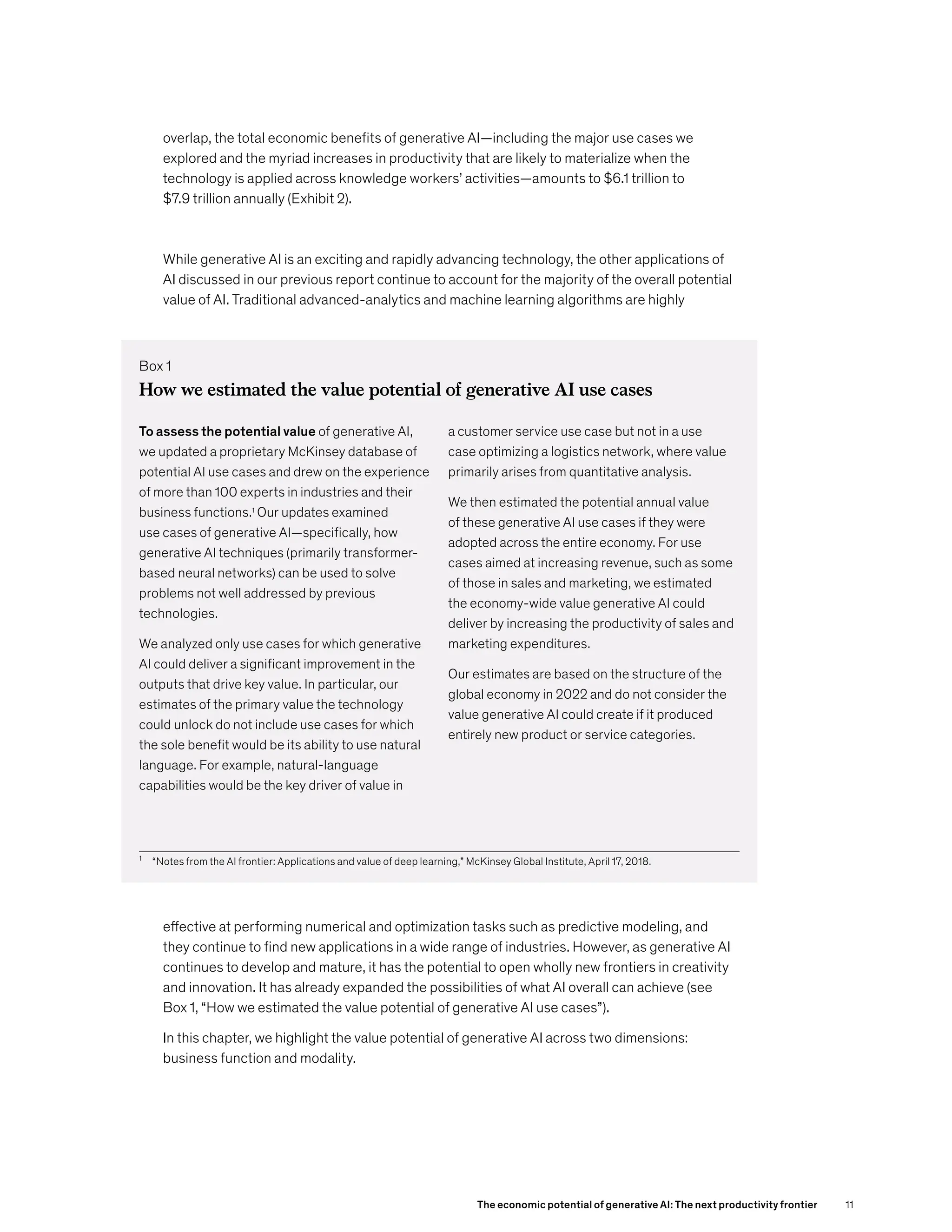The document discusses the significant economic potential of generative AI (gen AI) in the technology, media, and telecommunications (TMT) sectors, estimating it could add between $2.6 trillion and $4.4 trillion annually to the economy. It emphasizes the importance for organizations to adopt gen AI at scale, addressing various challenges and opportunities while detailing over 100 use cases across business functions. Additionally, the report highlights the necessity of strategic investment in talent, technology, and data to successfully implement gen AI and leverage its advantages effectively.





























































































































